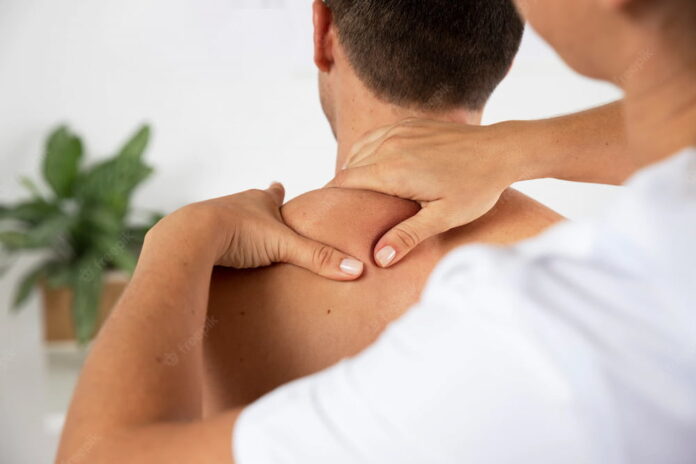Consider pursuing a career as a massage therapist if you want to change people’s lives. There are many different types of massage therapy, such as trigger point massage, prenatal massage, sports massage, and classic Swedish massage. There are some fundamental massage methods that every therapist should know across all of the different types of massage.
What Massage therapy in Temecula is the most often used? What methods are most effective for easing muscle tension or increasing blood flow?
By providing the right answers, you may quickly maximize the health benefits of massage. This is your fast reference.
1. Kneading
When considering the best Tantric massage London techniques, kneading is the first thing that comes to mind. In order to lessen muscle spasms, this technique entails pushing the muscle away from the bone with your fingertips or palms.
Not pinching the skin is kneading. It is acceptable to press firmly with your fingers together, but refrain from using your fingertips to stab someone in the body. Release your hands from the area and gently brush your palms over it if you feel like you are exerting too much pressure.
Directly under someone’s skin, a brief hand movement might assist you to release stress. However, you should knead slowly if you want to offer profound relief, like in a deep tissue massage.
Move toward the smaller muscle groups after finishing the larger muscle groups on the body. Kneading the muscles in the hands and feet helps reduce discomfort and increase flexibility because they are sources of tension.
2. Stroking
Another popular and widespread massage method is striking. To promote blood circulation, you apply modest amounts of pressure.
In addition to easing muscle knots, this can aid in the regeneration of injured skin and tissues. The continuity of touch can also be created through stroking. Because they are constantly aware of your presence, the recipient may relax and not be taken by surprise when you touch them.
For simpler stroking, keep your hands flat. The receiver may feel uncomfortable if your fingertips prick their skin.
You can exert pressure on various muscle groups by moving your hands in a circular motion on a person. If this is too challenging, you can raise and lower your hands.
The practice of stroking can be included in many massages. The Swedish massage combines kneading with lengthy strokes. Using strokes, you can determine a person’s tissue mobility and modify your following massage therapy approaches accordingly.
3. Face and Neck Rubbing
Face massages can enhance facial flexibility and reduce tension. Rub the recipient’s cheeks and forehead with the heels of your palms while they are facing you. Your palms should gently pull down on their facial skin, then you should release them and repeat the motion.
If you’re rubbing around their eyes and along their nose, use your fingertips. By doing so, you can massage the facial muscles without touching your eyes.
It is possible to reduce tension and migraines by massaging the temples. Sleep deprivation and tension headaches might both benefit from a back-of-the-neck massage. To avoid inducing pain by pressing on the spinal bones, massage the muscles instead of the bones.
4. Tapping
In order to increase someone’s blood circulation, tapping requires making quick hand motions. To tap, you can use your fingertips, knuckles, or the sides of your hands.
When a person’s body part is really stiff, tapping works best. Kneading or stroking them might be painful, but tapping can increase blood flow and help to loosen up tight muscles. Ask the customer how they are feeling while touching the stiff spot a few times.
Since rhythmic tapping resembles a person’s heartbeat and draws blood, it is more effective than random tapping. For a few seconds, tap once every second.
Take care not to use your hands excessively. You can cup your hands together and exert pressure across a muscle to avoid injuring anyone.
Never strike someone with the side of your hand; instead, move more quickly if necessary to exert greater force.
5. Vibrating
You want to establish a good rhythm when vibrating, much like when tapping. To shake the receiver’s muscles, however, use your hands or fingers.
Your fingers should first be pressed down on their tissues, followed by a release so that you can apply pressure once again. You do not pull your fingers away from their flesh, as you would while tapping. Maintain contact between your fingers while applying pressure, then releasing it periodically.
You can warm someone up by vibrating them if they’re feeling chilly. Increase your pace to help warm blood reach chilly places more rapidly.
As blood nourishes damaged skin cells and aids in their self-healing, vibrations can help reduce the formation of scar tissue. To speed up the healing process, vibrate the tissues near old scars and bruises.
Legs, back, and shoulders respond well to vibrations. Instead of vibrating, utilize tapping because it is easier on your hands and feet.
How to Give a Massage the Best
Despite being straightforward, massage techniques can have tremendous effects. The most typical massage techniques, kneading and stroking, can ease tight and stiff muscles.
Headaches and stress can be relieved by massaging the face and neck. You can use rhythmic tapping on a specific area of the body if someone is having trouble with discomfort there. Vibrating stimulates blood flow, which helps a person warm up and recover from an injury.
Our nine-month Massage Therapist curriculum includes instruction in all of these methods as well as a wide range of massage modalities.

